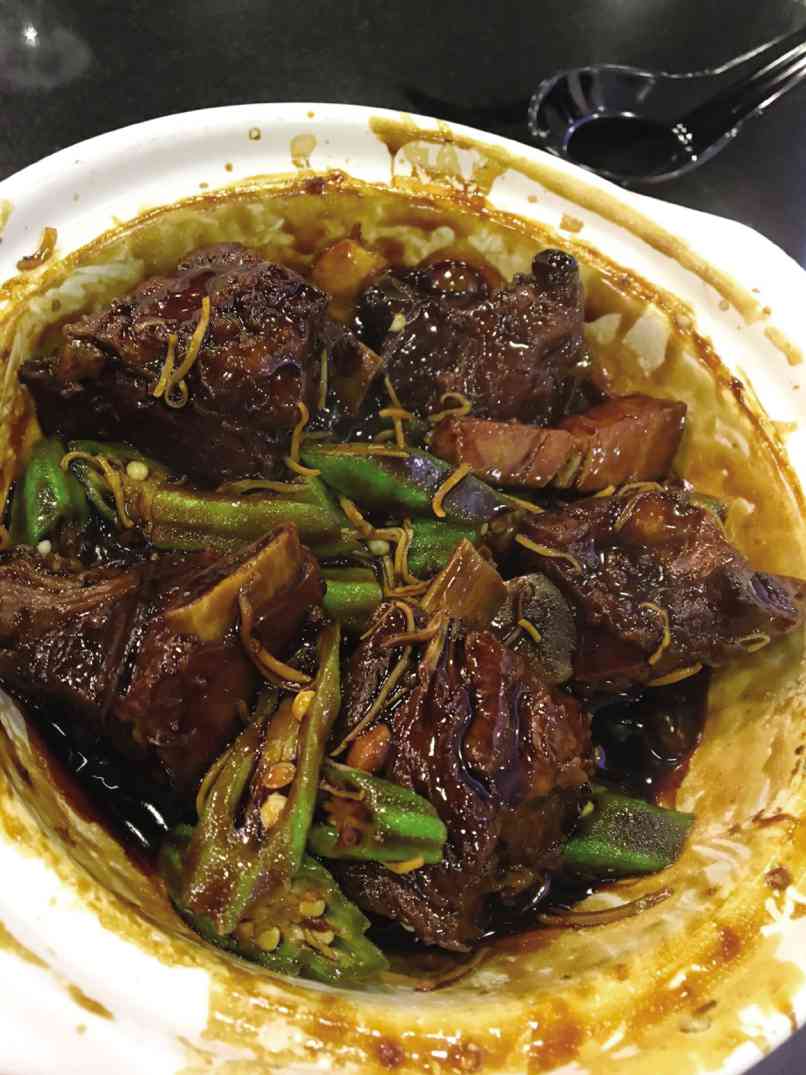
Exactly a year after Lee Kuan Yew’s death anniversary, we visited the National Gallery of Singapore, which was inaugurated late last year after over S$500 million worth of renovations and new buildings.
It was built from the former City Hall and Supreme Court buildings, both extremely historic, if not particularly handsome buildings. It was here, after all, that Lee Kuan Yew was appointed prime minister, and from here he declared independence from Malaysia and secured the future of the city-state.
Unlike the oil-rich emirates and other gulf states, Singapore did not license the cachet of the Louvre or the Guggenheim to lend authority to its claims (the right to exist as a proper Louvre museum was licensed to Abu Dhabi for around $500 million).
Singapore’s aims were less grandiose while at the same time more lofty. The not-inconsiderable space is intelligently constructed, and houses a well-curated permanent collection and—at the time we went—several temporary exhibitions.
If it is Singapore’s desire to be the self-appointed hub and clearing-house to represent Southeast Asian art, it is well on its way.
Classic Filipino works
On exhibit are some familiar classic Filipino masters (HR Ocampo, Fernando Amorsolo, Victorio Edades), as well as newer works, including recent propaganda art. These are all in better condition than the Philippines can manage.
Having works by prominent Pinoy artists—many of them owned by the museum, others on loan from private collections, beside contemporaneous or thematically similar works by artists from Malaysia, Vietnam, Thailand and Indonesia—reveals a narrative of Southeast Asian artistic self-determination. Embedded in the way the gallery has chosen to present its growing collection will, necessarily, be controversial.
But it’s impossible to argue that it’s not impressive. Those interested in contemporary art will want to catch a temporary exhibit of Johnny Manahan’s work—including some groundbreaking reflections on process that make use of early digital video, alongside Redza Piyadasa and Tan Teng-Kee.
Breakfast of champions
The new arts complex’s adaptively reused structure also houses interesting restaurants, notably a new home for Julien Royer’s Odette, which climbed as high as No. 11 on Asia’s Top 50 Restaurants last year.
But what we really wanted was the Singaporean breakfast of champions, nasi lemak (rice cooked with coconut milk, peanuts, chili sauce and bits of egg, all mixed together), with peanut butter on toast with the crusts cut off, and gloriously sweet and strong teh, milky and strong with a jolt of sugar.
We were able to continue our research on the perfect laksa: a hybrid between the bland, leaden cream-and-turmeric versions of curry laksa served foreigners, and the astringent, tannic Assam laksa (soured with tamarind and bitter from candlenut) sold on the street for S$5 a bowl.
A few streets away from the National Gallery, we sat on stools and devoured bak kut teh with dough sticks, and bowls of fresh kidney soup—so barely cooked that it still leached blood into the broth.
We also managed to offend the locals by methodically removing the packets of tissue paper that someone had left on the table and then occupying the table: apparently as grievous a tourist gaffe in the customs of the food court as desecrating a religious effigy.
Hallmarks
We leave it to others to make general observations about order, discipline, prosperity, cost of living, urban planning and much else that has become the hallmark of the city-state.
But there is one aspect of Singapore we particularly like, which it has in common with other vibrant, pluralistic societies—the abundance of good, cheap food.
This is less tied to economic ascendancy than one would think; London is a good example of a city where good food is available, but only to those who can afford it.
Laos and Cambodia suffer the same problem that Thailand did 20 years ago. The expertise is there, but the farm-to-market infrastructure and dubious hygiene keep the food from reaching its potential.
In a truly progressive, egalitarian society, Michelin-star restaurants, sidewalk snacks and everything in between should be abundant and accessible.
Deft touches
In a not entirely unconnected footnote: Cav, the upmarket restaurant and wine bar on Bonifacio High Street in Taguig, had a benefit dinner featuring Malaysian guest chef See Cheong Yan, who whipped up a “modern Malaysian” menu. (We came at the invitation of the restaurant and dined at its expense).
We were a bit skeptical of the “modern” bit going into the dinner, but the chef acquitted himself admirably, adding only deft little touches of Western ingredients and techniques to an essentially Malay and highly enjoyable evening.
We were chatting with Cav resident chef Markus Gfeller after the dinner and he was telling me, ruefully, that it was difficult being the “old kid on the block” as a restaurant going on eight years, when many new ones were popping up and getting all the press.
We felt that featuring a Malaysian chef (with inspired wine pairings, because it’s Cav, after all) was a step in the right direction. It was edgy and alive and unexpected in the way that another itinerant European chef would not have been.
Cav’s next guest, Noel de la Rama (April 6), also promises to be interesting.
Perhaps the secret to being the old kid on the block is to use it to one’s advantage and take risks that newer restaurants would not be able to carry off.
“A Fact Has No Appearance,” featuring Johnny Manahan’s work, runs at the National Gallery of Singapore until June 19.
Cav is at 9th Ave. cor. Bonifacio High Street, Bonifacio Global City, Taguig; tel. 8561798.

